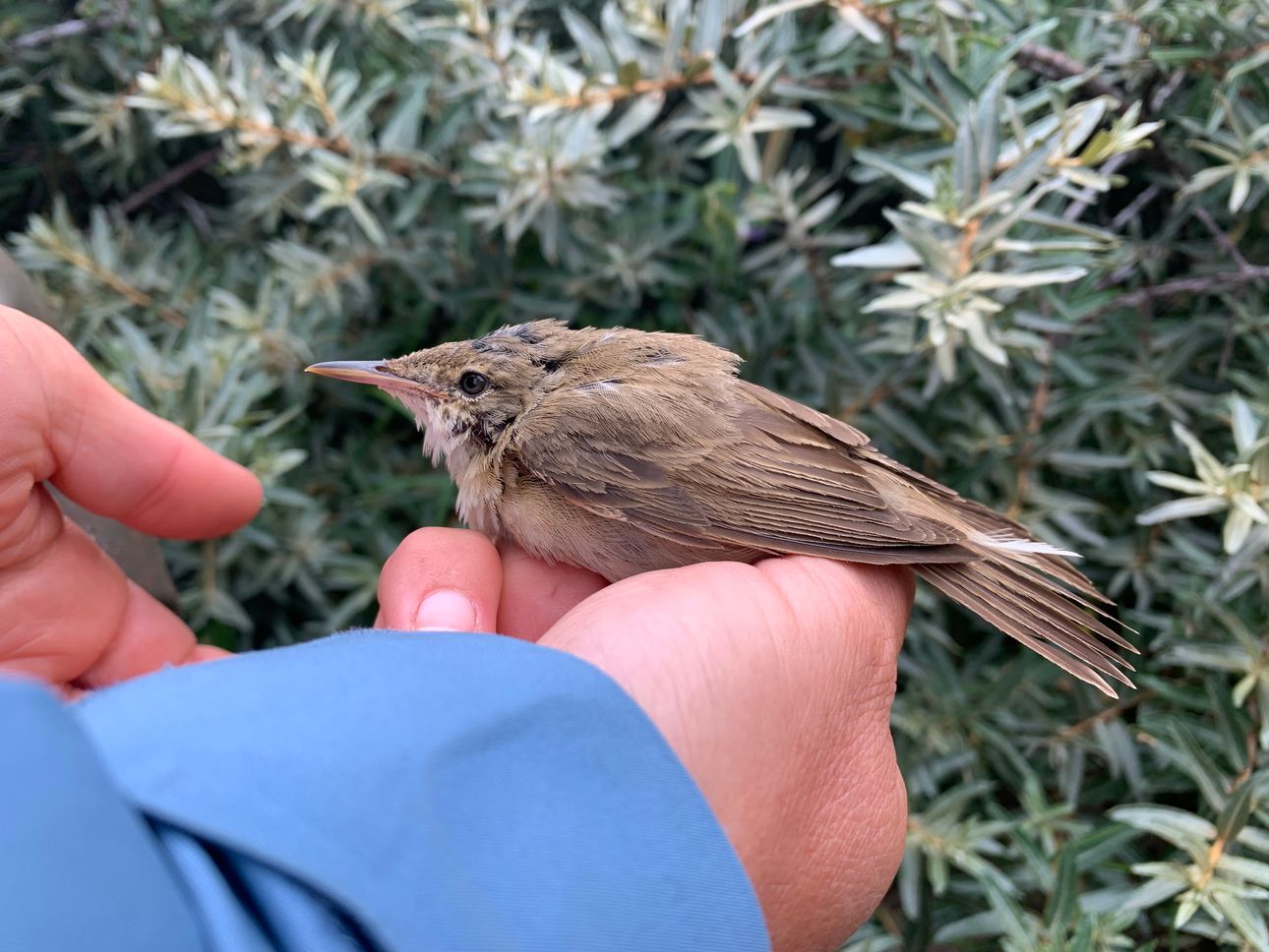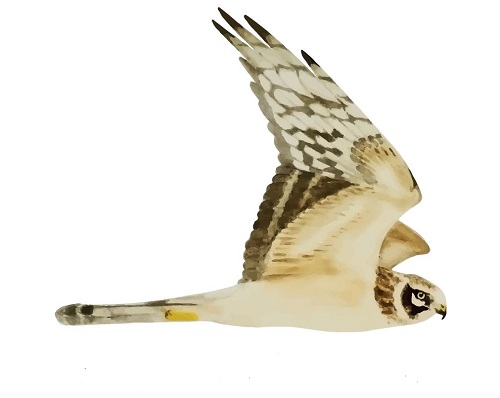Her på Skagen Fuglestations blog bringes korte nyheder i dagbogsformat om hændelser på fuglestationen.
Stockholm Syndrome
Hello everyone!
As has been the norm for the past few weeks, for today's fieldwork we split into two teams. Martina and I left for Kabeltromeln to go ringing at 4:00 am, and Rita and Nathan went to World's End 3 at Grenen to do the daily autumn migration seawatch. Brief rains in the first two hours of the ringing hampered bird activity, but when the rains stopped we managed to catch a good assortment of resident species such as song thrush (sangdrossel), blackbird (solsort), reed bunting (rørspurv), chaffinch (bogfinke), and a gorgeous lesser redpoll (lille gråsisken), as well as a few migrants, such as willow warbler (løvsanger). Interestingly, a high proportion of the birds today were recaptures, likely a result of us having ringed a decent number of this season's juveniles, and low rates of overnight migration. Alice and her mother, who is currently visiting Skagen, came by the ringing for the last few hours, and not long after their arrival, the day's unequivocal highlight flew into our nets. An after second calendar year (i.e., adult) reed warbler (rørsanger) is, on its own, no big surprise seeing that a lot of them breed around here. But closer inspection of the aluminium ring already fitted around its leg revealed an exciting 9-letter word: "STOCKHOLM."

Recapture Rørsanger from Sweden
Reed warblers (rørsanger), Acrocephalus scirpaceus, are common breeding birds in the wetlands around Skagen. They are very hard to distinguish from their sister species marsh warbler (kærsanger) unless they are singing since their songs are very distinct. The physical appearance, however, it very similar so on migration when they are not singing it is always a challenge to distinguish the two species and even when you hold them in your hand it can be hard. Both migrate from Sweden through Denmark to West Africa. Marsh warblers migrate quite a bit further and therefore earlier. They also almost exclusively use the „Eastern Flyway“ crossing the Arabic peninsular on their way to Africa, whereas reed warblers stay in the north longer and mainly choose the „Western Flyway“ passing the Mediteranean at the Channel of Gibraltar. Since reed warblers are very common breeding birds in wetland areas and most bird ringing stations in Europe are set up in such habitats, reed warblers are also a common species to recapture. This means that we have very good information on how and when and where they migrate. There are recaptures of birds as long as 12 years after they were ringed, which is quite impressive considering the small size and the amount of travel such a bird conducts each year! All we know about the bird we caught today so far, is that it was not born this year. Who knows how many times this small animal has flown across the equator in its life. It is genuinely marvelous that a minute feathered creature brings tales of Afrotropical scrublands shared with hornbills, sunbirds, and zebra, to cold windswept dunes here in Skagen. With regards to this blog's corny title, its unlikely our Swedish-ring-wearing warbler friend felt any admiration for its temporary captors (us), but its political-border-oblivious story sure held us captive with affection. We will report the bird to the Swedish ringing center and hopefully soon know more about its biography.
All the while, Rita and Nathan had quite an exciting seawatch, reporting a Manx shearwater (Almindelig Skråpe) passing by close to shore, black terns (sortterne), and a great skua (storkjove) that landed on the beach for a while!
The rest of the day was spent resting, inputting data, and repairing nets. Tomorrow, we look forward to good migration conditions, which hopefully bring good birds into our nets and flying by the shore!
Chau
Max
Ringing Totals:
Common Chiffchaff (Gransanger): 4
Eurasian Reed Warbler (Rørsanger): 2
Lesser Whitethroat (Gærdesanger): 2
Icterine Warbler (Gulbug): 1
Willow Warbler (Løvesanger): 1
Reed Bunting (Rørspurv): 1
Common Whitethroat (Tornsanger): 1
Eurasian Blue Tit (Blåmejse): 2
Garden Warbler (Havesanger): 1
Eurasian Blackcap (Munk): 1
Common Chaffinch (Bogfinke): 1
Common Blackbird (Solsort): 1
Total: 18
Local observations of the day in DOFBasen
People: Rita DeLucco, Alice Scalzo, Nathan Delmas, Max Laubstein, Martina Hillbrand, Knud Pedersen, and our guests Margit and Jesper.



